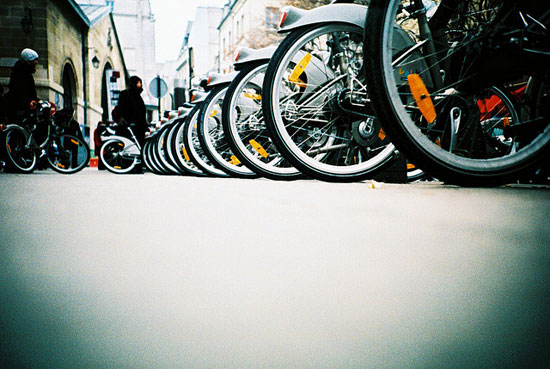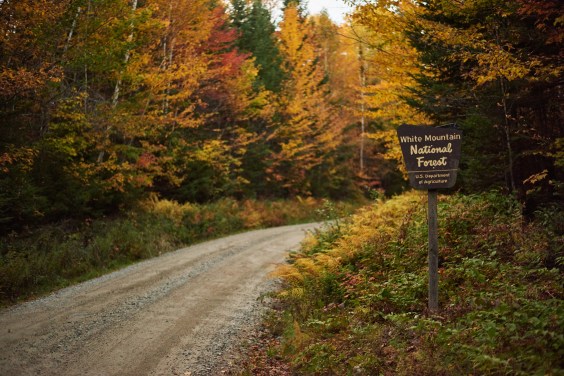
Editor's note: This is the second part in an occasional series of dispatches from Europe from Leah Shahum, the executive director of the San Francisco Bicycle Coalition, who is on sabbatical there.
I’ve visited Paris four times in the past 25 years, but it was not until a recent trip a few weeks ago that I really saw this fabled city the way I wanted to. For that, I credit bicycling and Paris’ much-publicized Vélib’ bikeshare program. On two wheels, I was able to move beyond the total tourist track to explore neighborhoods and find nooks and crannies filled with local cafes and funky shops that were not listed in my guidebook.
Much has been written about Paris Vélib’. Started in 2007, it is now the second-largest bikesharing system in the world with about 25,000 bikes spread among 1,800 stations. (It is second in size to the 50,000-bike program in Hangzou, China.) Since Vélib’ began just three years ago, it has provided about 80 million bicycle trips in Paris.
While Vélib’ has incited some criticism over vandalism and theft problems, the overwhelming story so far seems to be one of success. The system has helped coax more Parisians back onto bikes and has convinced local leaders to build out an impressive and growing bicycling infrastructure that, in turn, has encouraged even more Parisians to try bicycling for transportation. Not to mention that it has launched a worldwide race by other cities eager to replicate its success.
When I arrived in Paris a few weeks ago, I had not done much homework about the actual mechanics of using the Vélib’ system. While I wanted to check it out, frankly, I was skeptical that this media-darling system would work as well as advertised.
My Vélib’ experience wildly exceeded my expectations and has helped me realize that politicians’ fervor for bikesharing can transcend the flash to achieve substance. I believe it is worth the time and energy for San Francisco and other North American cities to invest in similar systems.

For our first ride, we started out after spotting a Vélib’ station just a block from our hotel in a central Left Bank neighborhood. Looking at a map, I saw another half-dozen pods within a short walk, just in case our home base was ever empty (when we wanted to check out bikes) or full (when we wanted to return them). There are Vélib’ stations roughly every 300 meters throughout Paris – and they really did seem to me to be everywhere. This extensive coverage is critical to its success, as I found out.
Sitting at a café across the street, we watched three different groups check in or out of the bikeshare pod. I felt encouraged and sauntered over to give it a try. Fortunately, the instructions are in English as well as French and other languages. The first half hour is free, with increasing charges for additional periods of use. When we ran into a few minor bumps while signing up on-site, a friendly British couple, also trying out the bikes during their weekend holiday in Paris, helped us out.
Once we understood what to do, we slipped in the credit card and were off!
The first thing I noticed as we started riding was how comfortable and user-friendly the bikes are. The three gears shifted smoothly; the brakes worked well; the seat was comfy; and my growing number of shopping bags fit into the front basket or dangled from the up-swept handlebars. I particularly liked the power-generated light on the back and the bright front light.
I’ve always been skeptical about how “universal” bikeshare frames are. But the same bikes comfortably fit both me at 5’3” and my partner at 6’3”. And these bikes felt brand new to me, hardly like the non-stop workhorses that they actually are. Sure, I wouldn’t want to go touring in the mountains for days straight on them, but these bikes were more than adequate for basic city cruising.
I was also surprised how much closer things actually are in Paris by bike than they appeared on my big, somewhat overwhelming map. Those long Paris blocks can be daunting on foot, and as extensive and efficient as Paris’ Metro system is, it still entails a lot of tiring steps up and down and more time spent traveling or waiting underground than actually seeing the city’s sights. As much as I love walking to explore a new city – and in so many ways, walking still is the best way to explore – the bike expanded our radius of sightseeing ten-fold. A museum that would have taken us at least 15 minutes to reach by Metro turned out to be less than five minutes away by bike. And a restaurant that required two transfers by Metro was only a fifteen-minute ride away.
Given that we only had a few days in town, this had a big impact on how much we could experience.
Most excitingly to me, the bikes allowed us to go deeper than the guidebook’s directions to famous tourist sites and, instead explore all of the good stuff in between. Rather than just museum-hopping and crossing major monuments off of our list, we wanted to see what Paris neighborhoods were like.
Within a few minutes of setting out, we were riding along the Seine River with a vague destination in mind. When I looked down the river’s embankment, I was happy to see the celebrated Paris Plage (a best-practices inspiration to San Francisco’s Sunday Streets) where roads are converted to beaches and long stretches of outdoor activity free from cars for an entire summer. We locked up the bikes (they come with a thick cable lock and accompanying key), and joined the fun for half an hour.
As we pedaled away – thrilled to have lucked upon one of our destinations without even trying! – we heard interesting, live-sounding music just a few blocks away. We altered course slightly and rode into a beautiful plaza where a free outdoor concert was being set up and sound-tested for later. Recognizing a few of the performers' names, we decided to swing back by in a few hours, when the free concert got underway.
Just then, the rain started. We quickly found Vélib’ parking pods less than a half-block away (and almost every few blocks that we looked), so it was easy to give up the bikes. We were finished pedaling for a few hours, and there was no guilt about not “getting our money’s worth,” as we ate, then shopped in a cool neighborhood we would have never found had we not been exploring by bikes.
When the sky cleared, we were full of French food and wine and had acquired a few too many shopping bags. We checked out new bikes and took a jaunt to the next fabulous new neighborhood.
After winding our way back to the free outdoor concert later that afternoon, we realized we were getting tight on time to make our dinner plans, and eating being the real highlight of any Paris trip, we skipped the rest of the show. But thanks to the bikes, I didn’t feel concerned about the time we had just invested getting to the show, as it was easy to move along. The travel time was valuable exploring time.
That night, we decided to ride Velib' to dinner, and what a good choice it was. We had originally thought the Metro would be better, since the restaurant was across town, relatively far for a nighttime ride in a city where we didn’t know our way. But after looking at the Metro map and realizing it would have taken two transfers and a lot of time underground, we checked out another pair of bikes.
It was a longer and hillier ride than I’d expected and we did show up about 10 minutes late, but it was well worth it. Much of the ride was along the Seine, and we pedaled surprisingly close to the Eiffel Tower, which was even more impressive at night than I remembered. On the way home, we were able to take our time hanging out and snapping photos at this amazing monument, which we hadn’t expected to have time to see at night. Again, thanks to the bikes, this is one of my favorite memories from the short Paris trip.
And that was all in the first day.
From a tourist’s point of view I was wildly impressed with Paris’ bikeshare program. But as an advocate of more and better bicycling, I realize now how profound the changes a system like this can impart on a city that takes the opportunity seriously. In a city like Paris or San Francisco, when tourists are happy, city leaders are happy. And right now, thanks in part to the success of bikesharing in Paris, tourists are happier because of great bicycling opportunities.
Imagine visitors to San Francisco being able to check out a bike near their hotels downtown, cruising down Market Street, stopping off at the MOMA or Asian Art Museum, continuing along the “Wiggle” route to Golden Gate Park to explore more museums and garden, then on to the Inner Sunset for lunch. Maybe they pedal back, or maybe they decide to ditch the bikes and jump on the N-Judah to return.
There is no doubt that the “virtuous cycle” of more people being on bikes thanks to the Vélib’ program has encouraged even more people – particularly locals -- to be on bikes, and so on and so on. As the number of direct beneficiaries grows, so does the political will of decision makers to dedicate more space to bicycling. The transformation in Paris is undeniable: dedicated bike space is being added at a fast pace, by any city’s standards.
This is the kind of sea change that cities such as San Francisco sorely need. We’ve only been nibbling around the edges of change. Granted those nibbles are getting progressively bigger and more popular, but they’re only bits of what we really need to help San Francisco live up to its potential as a great bicycling city.
Bikesharing could be – and should be – a next major step. Hopefully our regional transportation decision makers agree. Right now, the regional Metropolitan Transportation Commission (MTC) is considering a proposal to launch a multi-county bikeshare trial in San Francisco, San Jose, Palo Alto, Mountain View, and Redwood City.
The plan is smart in its aim to serve the cross-county needs of those in the Bay Area, though in my opinion, it's still too small in scope. We won't get where we need to go and induce a significant mode shift with a pilot of only 1,000 bikes at 100 locations.
Investing in a significant bike-share system could be the best money the region has spent in decades. In Muni’s case, how else will it move tens of thousands of people efficiently and affordably in the coming years?
Paris is not so dissimilar than San Francisco. Sure, we have more and bigger hills, but Paris is hardly flat. Geography will surely play into developing a specialized system for our city, but it’s a surmountable challenge.
On the flip side, we have far more temperate weather than our French friends. I expect our winter usage would be something they envy. And given the superiority of Paris’ Metro system, bikeshare offers to fill a much bigger transportation gap in our own city.
And, as I learned, it really is a lot of fun.





